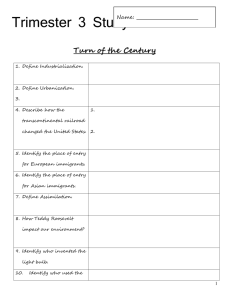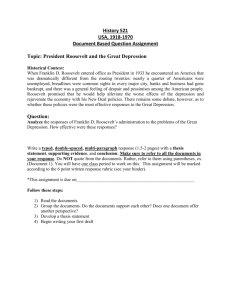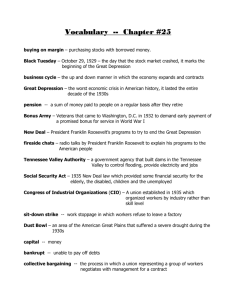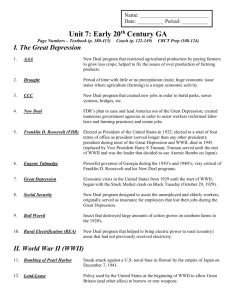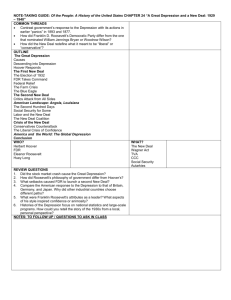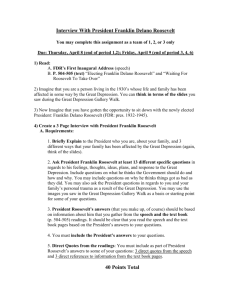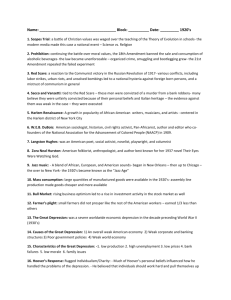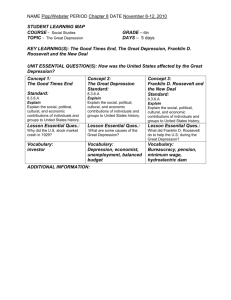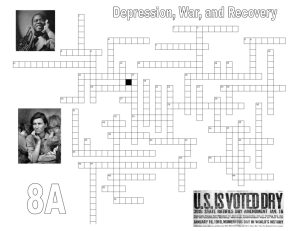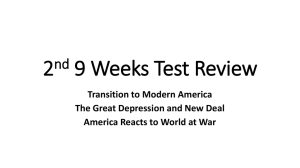Unit Five The Roaring 20`s, Great Depression and WWII
advertisement
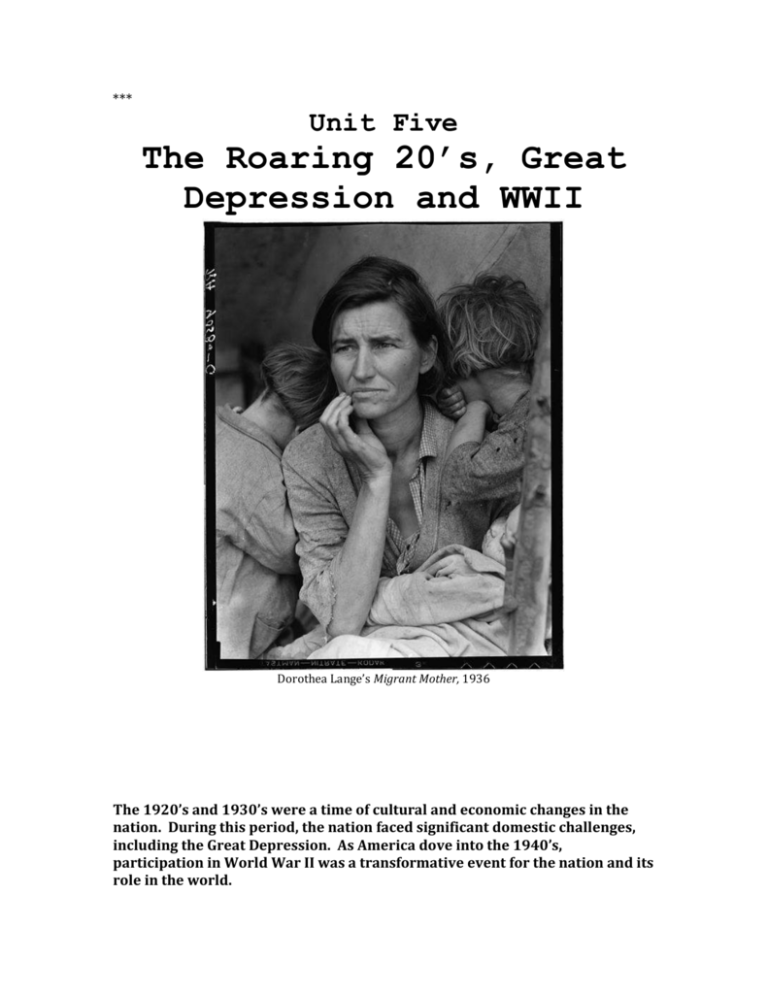
*** Unit Five The Roaring 20’s, Great Depression and WWII Dorothea Lange’s Migrant Mother, 1936 The 1920’s and 1930’s were a time of cultural and economic changes in the nation. During this period, the nation faced significant domestic challenges, including the Great Depression. As America dove into the 1940’s, participation in World War II was a transformative event for the nation and its role in the world. In the face of adversity, what causes some to prevail, while others fail? Learning Targets: 5a. I can explain how the 1920’s was a time of cultural change in the country, and the clash that occurred between modern and traditional values. - How did women’s efforts at self-expression change? - What impact did Prohibition have on America? - What was the Scopes Monkey Trial? How did it indicate a clash of cultures? 5b. I can summarize how African Americans continued to struggle for social and economic equality while expanding their own thriving and unique culture. - What were some of literary and artistic contributions associated with the Harlem Renaissance? - Who was Langston Hughes? 5c. I can analyze the underlying economic problems that led to the Great Depression. - What were the reasons for economic prosperity in the 1920’s? - What was buying on margin? Stock market speculation? - How did the farmers’ economic status indicate a problem? - What were the responses of Presidents Herbert Hoover and Franklin D. Roosevelt to the Great Depression? o What is supply side (or trickle down) economics - What were the human and environmental causes of the Dust Bowl? - Who were Okies? What was the effect of the Dust Bowl? - Who is John Steinbeck? Grapes of Wrath? 5d. I can evaluate Franklin D. Roosevelt’s response to the Great Depression. - What were the first 100 days? What were the alphabet soup programs? - What was the New Deal - What were “Fireside Chats”? - How did FDR expand the role of federal government? - What was Schechter Poultry vs. US? (Sick Chicken case) - What was FDR’s court packing effort? 5e. I can construct a trajectory for how Franklin Roosevelt’s leadership moved the country from a policy of neutrality to a pro-Allied position and then direct involvement in WWII. - Why were the Neutrality Acts of 1935 – 1937 passed? - What were the “cash and carry” and Lend-Lease policies? How was America the “arsenal of democracy”? What was America’s relationship to Japan prior to Pearl Harbor? What was the impact of the Japanese attack on Pearl Harbor? How did technological advancements change the nature of war? What was the Manhattan Project? Hiroshima and Nagasaki? 5f. I can illustrate the significant impact of WWII on American society. - How did wartime production affect women and African Americans? - What were war bonds and rationing? - What were Executive Order 9066, Japanese internment camps and Korematsu vs. US? 5g. I can evaluate how the United States played a major role in efforts to prevent future human suffering in response to WWII and the Holocaust. - How much did American officials know about the Holocaust? - What role did America play at the Nuremburg trials? - What is the United Nations Universal Declaration of Human Rights? What was Eleanor Roosevelt’s role in this?
